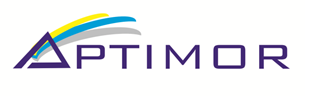Risk Evaluation Of The Shipyard Supply Chain Process On Ship Repair With The House Of Risk Matrix Method
Abstract
One of the keys to the success of ship repair is the supply chain (SC) process of materials that arrive on time. However, delays in its implementation were still found due to poor SC risk management. The purpose of the study is to identify risk factors for SC delay, measure risk factors and evaluate risk factors. This study uses the HOR (House of Risk) method which identifies risk variables (risk events and risk agents) and designs mitigation actions. The results of the HOR phase 1 study show an assessment score in the form of Aggregate Risk potential (ARP) which has a high influence on KM repair. Lintas Damai 1 includes: Supplier's unpreparedness in fulfilling orders with a score of 225, the forwarder experienced a delay in scoring 116 and Needs rejuvenation of facilities and transportation with a score of 120 and KM. Shinpo19 includes the quality of materials from suppliers that are of poor quality with a score of 280, materials that are difficult to obtain in the area with a score of 138 and the layout of poorly organized storage warehouses with a score of 92. The results of HOR phase II include mitigation actions to handle risk agents in KM. Lintas Damai 1 includes finding trusted supplier partners, increasing networking with other suppliers, holding tenders with suppliers who are ready and conducting service and checks every month. Meanwhile, KM. Shinpo19 has mitigation actions to handle risk agents, namely replacing materials with the same specifications but still of quality, having supplier connections with quality standards, supervising suppliers so that they comply with quality standards and structuring materials based on their type.
Keywords
Full Text:
PDFReferences
I. Baroroh, I. M. Ariana, and A. A. B. Dinariyana, “Supply chain performance analysis on modular construction shipbuilding,” in IOP Conference Series: Earth and Environmental Science, IOP Publishing Ltd, Sep. 2020. doi: 10.1088/1755-1315/557/1/012048.
J. Reyes, J. Mula, and M. Díaz-Madroñero, “Development of a conceptual model for lean supply chain planning in industry 4.0: multidimensional analysis for operations management,” Production Planning and Control, vol. 34, no. 12, pp. 1209–1224, 2023, doi: 10.1080/09537287.2021.1993373.
D. Ivanov, S. Sethi, A. Dolgui, and B. Sokolov, “A survey on control theory applications to operational systems, supply chain management, and Industry 4.0,” Annu Rev Control, vol. 46, pp. 134–147, Jan. 2018, doi: 10.1016/j.arcontrol.2018.10.014.
H. Alrosyid and R. Prabowo, “Seminar Nasional Hasil Penelitian dan Pengabdian kepada Masyarakat UNIPMA OPTIMASI PROSES IMPOR KOMPONEN KAPAL PADA SUPPLY CHAIN MANAGEMENT MENGGUNAKAN MONTECARLO,” 2019.
I. Baroroh, I. M. Ariana, and A. A. B. Dinariyana, “Risk Analysis of Engine Room Module Installation with Integration of Bayesian Network and System Dynamics,” International Review of Mechanical Engineering (IREME), vol. 16, no. 6, p. 299, Jun. 2022, doi: 10.15866/ireme.v16i6.22456.
I. Baroroh, G. V. Setiawan, A. Azhar, D. Hardianto, and A. B. Widodo, “Risk Analysis of Delay in Ship Repair KM Binaiya with Bayesian Network Method,” International Journal of Marine Engineering Innovation and Research, vol. 8, no. 3, pp. 2548–1479, Sep. 2023.
I. N. Pujawan and L. H. Geraldin, “House of risk: A model for proactive supply chain risk management,” Business Process Management Journal, vol. 15, no. 6, pp. 953–967, Nov. 2009, doi: 10.1108/14637150911003801.
Z. D. Cahyani, S. R. W. Pribadi, and I. Baihaqi, “Studi Implementasi Model House of Risk (HOR) untuk Mitigasi Risiko Keterlambatan Material dan Komponen Impor pada Pembangunan Kapal Baru,” Jurnal Teknik ITS, vol. 5, no. 2, pp. 52–59, 2016.
R. Andrias Sahulata, E. Gumabo, J. A. Mononutu, A.-M. Utara, and S. Utara, “Analisis Manajemen Risiko Supply Chain Menggunakan Metode House of Risk pada PT. Bandar Trisula,” 2023.
I. N. Pujawan and L. H. Geraldin, “House of risk: A model for proactive supply chain risk management,” Business Process Management Journal, vol. 15, no. 6, pp. 953–967, Nov. 2009, doi: 10.1108/14637150911003801.
Y. E. Pertiwi and A. Susanty, “ANALISIS STRATEGI MITIGASI RESIKO PADA SUPPLY CHAIN CV SURYA CIP DENGAN HOUSE OF RISK MODEL,” 2017.
M. E. Sibuea1, D. Hadi, and S. Saragi1, “Analisis Risiko Keterlambatan Material dan Komponen pada Proyek Pembangunan Kapal dengan Metode House of Risk (HOR) Studi Kasus: Pembangunan Kapal Ro-Ro 300 GT Danau Toba,” Jurnal SIstem Teknik Industri (JSTI), vol. 21, no. 2, pp. 28–42, 2019.
DOI: http://dx.doi.org/10.12962%2Fj23378557.v11i2.a21214
Refbacks
- There are currently no refbacks.
This work is licensed under a Creative Commons Attribution 4.0 International License. IPTEK The Journal of Engineering published by Pusat Publikasi Ilmiah, Institut Teknologi Sepuluh Nopember.
Please contact us for order or further information at: email: iptek.joe[at]gmail.com Fax/Telp: 031 5992945. Editorial Office Address: Pusat Riset Building 6th floor, ITS Campus, Sukolilo, Surabaya 60111, Indonesia.








